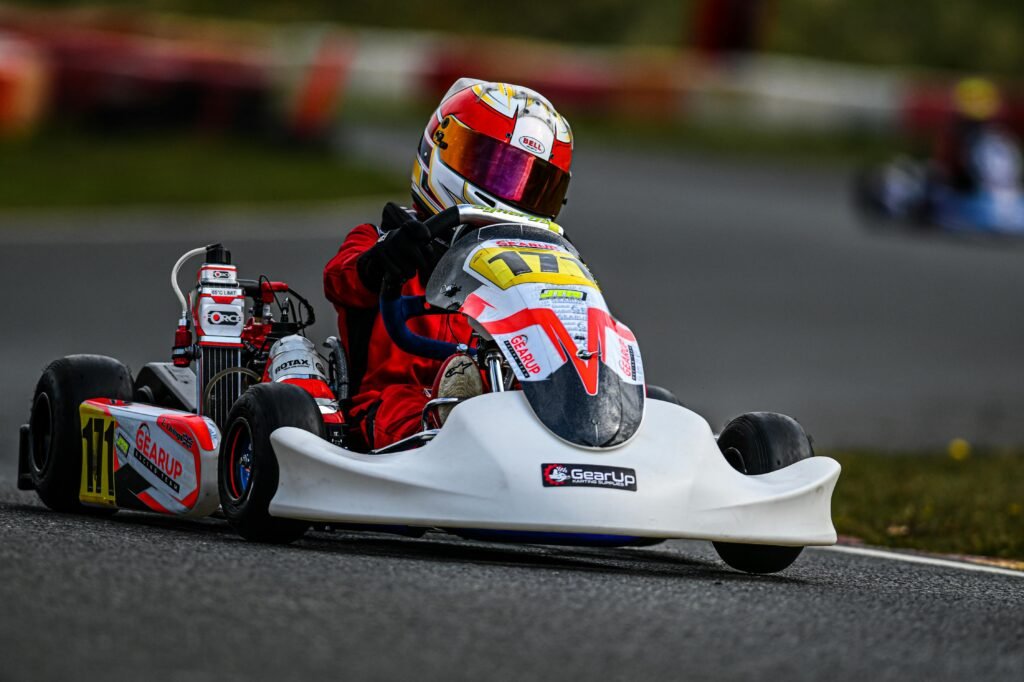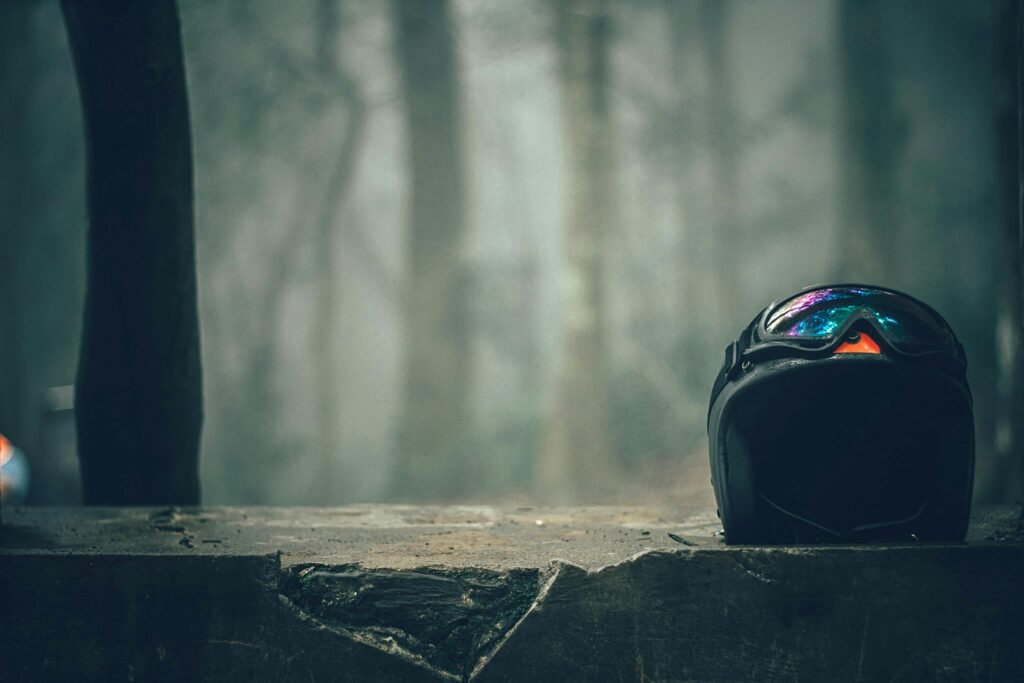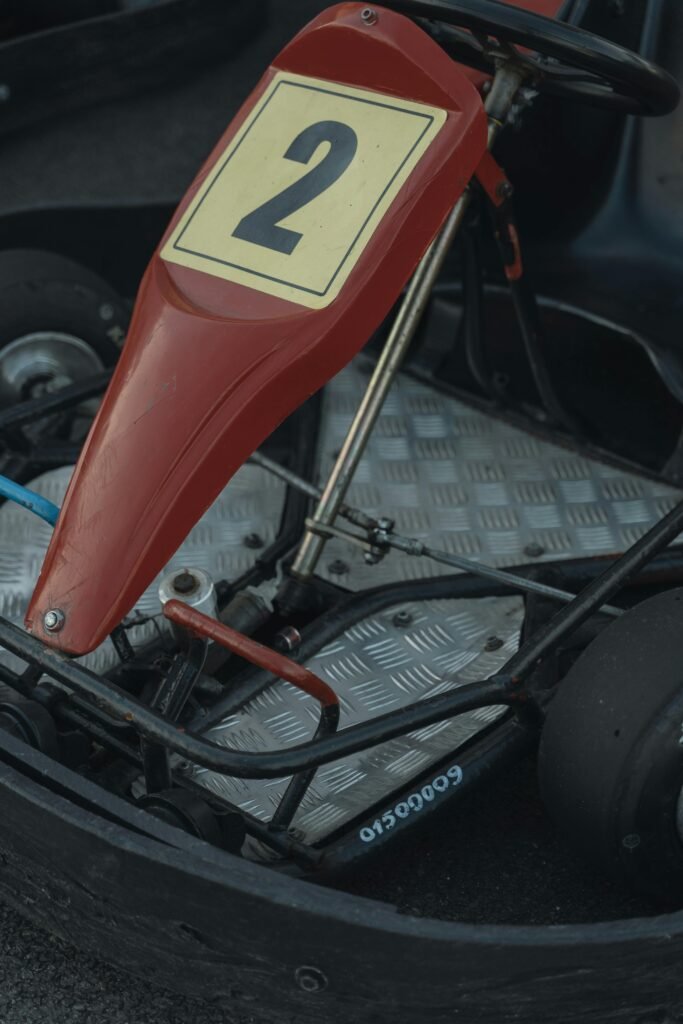While go-karting is widely considered a safe and enjoyable motorsport, it does come with some inherent risks, much like any fast-paced activity. Accidents are rare, but understanding the potential hazards can help participants mitigate these dangers and ensure a safer experience. With professional tracks implementing strict safety measures and drivers adhering to rules and guidelines, the likelihood of serious injury remains low. However, being aware of the risks is crucial for both beginners and seasoned drivers.
1. Common Risks in Go-Karting

Here are some potential dangers associated with go-karting that drivers should be mindful of:
- Collisions: One of the most common risks in go-karting is collisions. Because karts race in close proximity to one another, there’s always a risk of bumping into other drivers, especially during overtaking maneuvers or on tight corners. Although the speeds are generally lower than professional racing, contact between karts can still lead to minor injuries if not handled properly.
- Loss of Control: For beginners, it’s easy to misjudge how much to brake or steer. Losing control of the kart, particularly on sharp corners or during high-speed sections of the track, can result in a spin or even a crash. This is especially common for new drivers who are unfamiliar with kart handling or who underestimate the forces involved in cornering and braking.
- Spinning Out: A kart can spin out when the driver either oversteers (turns the wheel too sharply) or understeers (doesn’t turn enough), particularly on wet or slippery surfaces. Even on dry tracks, sharp turns taken at high speeds can cause a kart to lose traction and spin, leading to potential collisions with barriers or other karts.
- Minor Injuries: The physical demands of go-karting, combined with the possibility of light collisions, can result in minor injuries such as scrapes, bruises, or muscle soreness. These are common for first-time drivers who may not be accustomed to the strain placed on their arms, shoulders, and core as they steer, brake, and accelerate the kart. Additionally, bumps and jolts from the track can lead to minor strains.
2. Serious Injuries (Rare but Possible)
Although serious injuries in go-karting are uncommon, they can still occur, particularly in cases where safety protocols are not followed. Professional tracks take extensive precautions to prevent these scenarios, but it’s essential for drivers to understand the potential risks:

- Head Injuries: While drivers are required to wear helmets, there is still a minimal risk of head injuries such as concussions or trauma in the event of a high-speed collision or rollover. Helmets provide significant protection, but in rare cases, severe impacts can result in injuries if the kart crashes into barriers at high speeds or flips unexpectedly.
- Fractures and Broken Bones: Though go-karts are designed to minimize the risk of rollovers or major crashes, collisions at high speeds, particularly in competitive environments, can lead to fractures or broken bones. However, this type of injury is quite rare in professional karting environments where stringent safety measures are in place.
- Neck and Spinal Injuries: In very rare cases, if a driver’s head or neck sustains a significant impact, there is the possibility of a spinal injury. These types of injuries typically occur if a kart flips or collides forcefully with another kart or barrier. Tracks often mitigate these risks by implementing protective barriers and stringent rules around aggressive driving.
3. Safety Measures to Minimize Risks
Professional go-kart tracks are highly regulated to prioritize safety, with various safety measures designed to protect drivers. Here’s how they ensure that karting remains a thrilling but safe experience:
- Protective Gear: Every driver is required to wear helmets that meet safety standards, along with other protective gear such as gloves and racing suits. These items offer protection against scrapes, bruises, and more serious injuries in the event of a crash. Some tracks also provide neck braces to prevent whiplash, especially during high-speed races.
- Track Barriers and Cushioning: To prevent severe injuries during collisions, professional tracks are lined with safety barriers made from materials such as tires, plastic, or foam. These barriers absorb the impact of crashes, reducing the likelihood of serious injury when a kart hits the sides of the track or other obstacles.
- Safe Kart Design: Go-karts are designed with safety in mind. They typically have a low center of gravity, which minimizes the risk of rollovers, even during sharp turns or collisions. Many karts are also equipped with seat belts or roll bars to ensure that drivers remain securely in place in case of impact. Additionally, the overall build of the kart is robust enough to withstand collisions without crumpling or causing harm to the driver.
- Speed Limiters for Beginners: For first-time drivers or younger participants, many tracks offer karts equipped with speed limiters. This ensures that beginners aren’t driving faster than they can safely handle, reducing the risk of losing control or crashing. Limiting the speed helps new drivers focus on mastering the basics before progressing to faster karts.
- Pre-Race Safety Briefings: Every professional track conducts pre-race briefings where drivers are educated on safety procedures, track rules, and how to handle the kart effectively. These briefings emphasize the importance of responsible driving and help prevent dangerous maneuvers that could lead to accidents. Drivers are instructed on overtaking rules, proper braking techniques, and how to react to different track conditions.

4. How to Stay Safe While Karting
Go-karting can be an exhilarating experience, but ensuring safety on the track is essential for preventing accidents and minimizing risks. Here are some crucial guidelines to follow for a safe go-karting experience:
- Follow Track Rules and Instructions: Every professional go-kart track operates under specific safety rules that are designed to keep drivers safe. Pay close attention to pre-race briefings, and always follow instructions given by marshals or instructors. Whether it’s about overtaking, braking points, or speed limits, sticking to these rules is essential for avoiding collisions or accidents.
- Wear Proper Safety Gear: Wearing the right protective gear is non-negotiable in go-karting. Ensure your helmet fits securely and is fastened correctly. Most tracks also provide racing suits, gloves, and closed-toe shoes to protect against abrasions or burns caused by friction during high-speed racing. If available, opt for a neck brace to further reduce the risk of whiplash in case of sudden movements or impacts.
- Drive Within Your Skill Level: It’s important to understand your own limits, especially if you’re new to karting. Driving at a speed beyond your control increases the likelihood of spinning out, losing control, or crashing into other karts. Start slow and focus on mastering the basics—like braking, steering, and cornering—before increasing your speed. As your skill improves, you can gradually push your limits safely.
- Respect Other Drivers: Karting is a social and competitive activity, but aggressive driving puts everyone at risk. Avoid dangerous behaviors like bumping into other karts or making sudden, unpredictable moves. Maintain spatial awareness, give other drivers enough room to maneuver, and respect overtaking signals. By being courteous on the track, you contribute to a safer, more enjoyable racing environment.
So, is Go-Karting Dangerous?
Go-karting, like any motorsport, does carry some inherent risks, but with the right precautions, it’s generally considered a safe and controlled activity. Professional tracks prioritize safety with pre-race briefings, track barriers, and well-maintained karts designed for stability and protection. Serious injuries are rare, and most incidents involve minor scrapes or muscle fatigue, especially for first-time drivers.

So, is go-karting dangerous? While there are risks involved—such as collisions, loss of control, or minor injuries—the sport is designed to be safe when proper safety measures are followed. The likelihood of serious injury is minimal, and the sport remains highly enjoyable when drivers respect track rules, wear protective gear, and drive responsibly.
In conclusion, with the right mindset, adherence to safety protocols, and respect for fellow drivers, go-karting can be a thrilling yet safe experience for everyone involved.
Start your go-karting journey at Aruani Grid Motorsports Academy in Bangalore.
